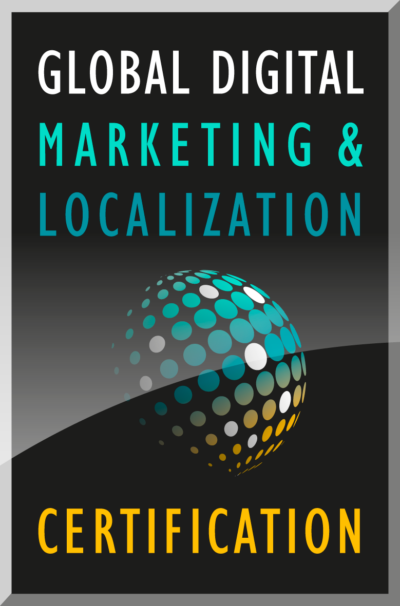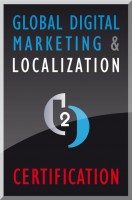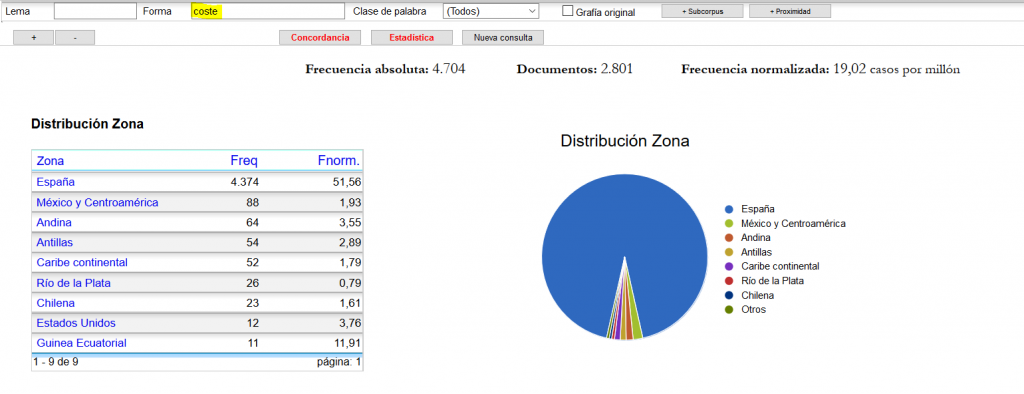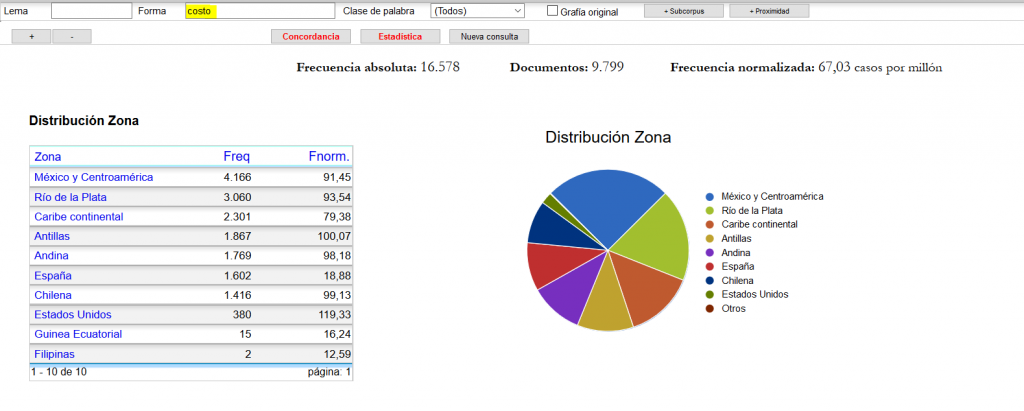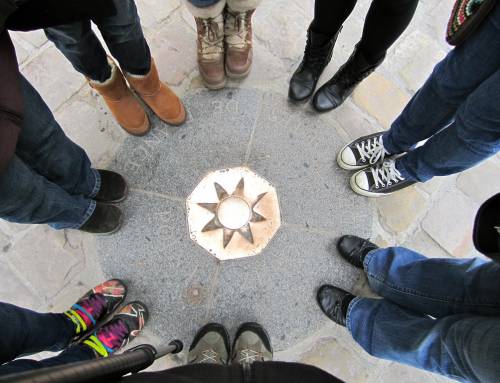This is the final paper presented by Rocío Cordero, a recent graduate of the Global Digital Marketing and Localization Certification (GDMLC) program. This paper presents the work being produced by students of The Localization Institute’s Global Digital Marketing and Localization Certificate program. The contents of this Paper are presented to create discussion in the global marketing industry on this topic; the contents of this paper are not to be considered an adopted standard of any kind. This does not represent the official position of Brand2Global Conference, The Localization Institute, or the author’s organization.
“Universal”, “standard”, “neutral” or “international”, these are some of the adjectives being used to refer to the ideal panacea of a single Spanish language. In order to reduce costs and simplify logistics, many localization vendors and multinational companies seek to use the same Spanish for both sides of the Atlantic. In other words, they want a Spanish language that can be understood in the whole of the Spanish-speaking world, which comprises more than 20 different countries.
In this article we will explore some of the advantages and disadvantages of this approach, and examine some concrete strategies and resources that can be used to produce a Spanish language that is as standard as possible. The debate around this issue has continued for years, is it really an effective way to address most Spanish-speaking consumers? The answer is, “it depends”. While the grammar of the Spanish language is pretty homogeneous across most variants, the bulk of the variation lies in terminology.
Certain types of text, such as technical and scientific, show far less terminological differences from country to country than, for instance, text that relies heavily on everyday words, like marketing material. It’s easy to find examples to illustrate these risky cases: the word “bicho” for instance, could be used in an insect repellent ad in Argentina (we use it informally to refer to “insects”), but would make no sense to a Salvadoran, where it means “child”; it could even be offensive for a Puerto Rican, where “bicho” is a slang word for the male sex organ. A possible solution in this case could be to use the word “insecto” (insect), which is (at least) intelligible to consumers, and there’s no risk of negative connotations. We’ll look into some similar strategies later in this article. Although some of the challenges are the same, I will not refer here to the Spanish used by the Hispanic population living in the US, which deserves a dedicated and separate analysis, due to its particular characteristics and the influence of the English language.
The use of neutral Spanish at Microsoft
Although Windows supports 20 different Spanish locales, the user interface, commands and content are the same for all Spanish versions of Windows (the differences are restricted to currency, date, time, numbers, or decimal and thousands separators). Microsoft aims to produce what they call “neutral” Spanish in order to serve the vast Spanish-speaking population. Some of the strategies that their Spanish localization team uses include picking a term that is not necessarily frequent but is understandable in every country, (for instance, “equipo” instead of “computadora” or “ordenador”, the latter being used almost exclusively in Spain), choosing the term that is used in the majority of the Spanish-speaking countries (e.g., mouse) and prohibiting the use of certain words and expressions that may have negative connotations in certain countries (for instance, the verb “coger”, which inoffensively means “take” in countries like Spain and Puerto Rico, but in Argentina has a strong sexual connotation).
Microsoft makes it clear that it’s not about coining new terms; it’s more about reaching a compromise. They acknowledge that this style may be perceived as unnatural or foreign by some users, as would be expected, since neutral Spanish is not exactly a language variety, but a hybrid created for the purposes of localization. As mentioned before, the reason for the adoption of neutral Spanish in this case is strictly commercial and practical.
Some tools and strategies
As a Spanish lead working for an organization who serves a large number of Spanish-speaking countries, I too face the challenges of deciding on the terminology that will make up “our” universal Spanish. Experience has taught me that before embarking on the adventure of localizing into neutral Spanish, it is important to have a clear plan that includes a style guide and a glossary of “standardized” terms before starting any project.
The linguistic team should include members from as many different Spanish-speaking countries as possible, especially the target markets. Excellent tools and publications freely accessible online provide us with quantitative and qualitative data to help us make well-founded terminological choices. One of them is CORPES XXI, a textual corpus maintained by the Real Academia Española (Royal Spanish Academy, the institution that oversees the Spanish language). This online database includes curated content from a diversity of genres and allows the user to search for the frequency of a certain term in various Spanish-speaking areas and countries. In order to maintain an accurate representation of the geographical distribution of Spanish speakers, 30% of the texts originate from Spain, with 70% from Latin America. For example, if we search for the word “coste”, the word used for “cost” in Spain, we get the following data:
The graphic above shows that the word “coste” is almost exclusively used in Spain. Therefore, if we want to use a term that is understandable in the majority of the Spanish-speaking countries, we would avoid “coste”. If we search for the Spanish equivalent “costo”, we can see that it is more evenly distributed:
It is always necessary to cross-check this information with other sources, especially in-country reviewers, when the differences are not so clear-cut. The Royal Spanish Academy’s iconic Dictionary of the Spanish language includes valuable (though limited) information regarding usage in various Spanish-speaking countries these days, and it is expected to include even more in the next edition. The Academy also publishes the Diccionario panhispánico de dudas (Pan-Hispanic Dictionary of Doubts), which includes even more information on lexical and syntactical differences between Latin America and Spain.
Choosing the best approach
I believe that it is possible to localize into a universal Spanish, but we need to be smart about it and remain aware of the trade-offs. Not all projects lend themselves to this approach. In order to determine whether or not it is a good strategy, we need to pay close attention to the type of text, the register and its audience.
Technical or scientific content might be easier to adapt, but marketing material may require more than one version. Another option is to determine our main markets and tailor the content with this information in mind. As to the register, the more formal the text, the easier it is to make it more neutral, as most of the variances are colloquial.
Both the type of text and the register are very much linked to the audience: an expert in a given subject shares with his colleagues from other countries a rather stable set of terms, whereas terminology that is used informally, and mainly found in oral communication, is more dynamic, volatile, and less subject to contact with other variants of the language. In addition, the pervasiveness of the media and internet has contributed to the universalization of the language, or at least has helped us to be aware of the differences.
References
Andión Herrero, Maria Antonieta. “La diversidad lingüística del español: la compleja relación entre estándar, norma y variedad.” Proc. of 8th Conference on General Linguistics, Madrid. 2008. Web. 23 Aug. 2016. <http://www.lllf.uam.es/clg8/actas/pdf/paperCLG10.pdf>.
Chacón García, Carmen. Grado de Representatividad léxica del español. Varilex. Web. 24 Aug. 2016. <https://carmenchacon.shinyapps.io/PCIC/>.
Corpus del español del siglo XXI (CORPES). Real Academia Española, 2016. Web. 24 Aug. 2016.
Diccionario de la lengua española. Real Academia Española. Web. 24 Aug. 2016. <http://dle.rae.es/>.
Diccionario panhispánico de dudas. Real Academia Española. Web. 24 Aug. 2016. <http://www.rae.es/recursos/diccionarios/dpd>.
- Serrador, Francisco Javier, Xosé Castro Roig, Lucía Rodríguez Corral, and Arturo Aguilar. Localización de Gnome al español. 2006. Web. 23 Aug. 2016. <https://mail.gnome.org/archives/gnome-es-list/2011-October/pdfwqsWIw3tLC.pdf>.
Fundéu BBVA. Web. 24 Aug. 2016. <http://www.fundeu.es>.
Gambín, José, and Igor Zubicaray. “Spanish for Local and Global Markets.” Tcworld.info. Tcworld, Dec. 2008. Web. 22 Aug. 2016. <http://www.tcworld.info/e-magazine/business-culture/article/spanish-for-local-and-global-markets>.
García-Saavedra Valle, María Teresa. “¿Traduces o localizas? La localización, futuro y presente de la traducción.” Proc. of 1st International Conference “Spanish, language of translation”, Almagro. 2002. Web. 24 Aug. 2016. <http://cvc.cervantes.es/lengua/esletra/pdf/01/029_garcia.pdf>
López García, Avelino. “El español neutral en el ámbito informático o computacional: selección de vocabulario.” Diss. Universidad Complutense de Madrid. I18n Guy. Web. 22 Aug. 2016.
Martin, Patrice. “The Quest for El Dorado: A Single Spanish for All.” MultiLingual. MultiLingual Computing, Inc., Sept. 2001. Web. 22 Aug. 2016.
Parámetros de selección de textos. Real Academia Española. Web. 24 Aug. 2016. <http://www.rae.es/publicaciones/parametros-de-seleccion-de-textos>.
Ruiz Tinoco, Antonio, and Hiroto Ueda. “The Varilex Project – Spanish Lexical Variation.” Linguistica Atlantica 27 (2007): 117-21. Web. 24 Aug. 2016. <https://journals.lib.unb.ca/index.php/la/article/viewFile/22632/26288>.
Spanish Style Guide. Microsoft, 2011. PDF. 24 Aug. 2016.
Copyright © 2016 The Localization Institute. All rights reserved. This document and translations of it may be copied and furnished to others, and derivative works that comment on or otherwise explain it or assist in its implementation may be prepared, copied, published, and distributed, in whole or in part, without restriction of any kind, provided that the above copyright notice and this section are included on all such copies and derivative works. However, this document itself may not be modified in any way, including by removing the copyright notice or references to The Localization Institute, without the permission of the copyright owners. This document and the information contained herein is provided on an “AS IS” basis and THE LOCALIZATION INSTITIUTE DISCLAIMS ALL WARRANTIES, EXPRESS OR IMPLIED, INCLUDING BUT NOT LIMITED TO ANY WARRANTY THAT THE USE OF THE INFORMATION HEREIN WILL NOT INFRINGE ANY OWNERSHIP RIGHTS OR ANY IMPLIED WARRANTIES OF MERCHANTABILITY OR FITNESS FOR A PARTICULAR PURPOSE.
Author Bio:
 Rocío Cordero is a translator and terminologist who currently leads the Spanish translation team of a Washington DC-based international non-profit organization. A 10-year veteran of the translation industry, she has mastered numerous roles, from language specialist to project coordinator. She specializes in translation quality assurance, streamlining of work processes and translator training.
Rocío Cordero is a translator and terminologist who currently leads the Spanish translation team of a Washington DC-based international non-profit organization. A 10-year veteran of the translation industry, she has mastered numerous roles, from language specialist to project coordinator. She specializes in translation quality assurance, streamlining of work processes and translator training.
You can connect with her on LinkedIn.
_______________________________



